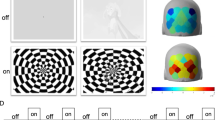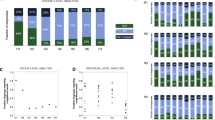Abstract
Functional near-infrared spectroscopy (fNIRS) is a promising neuroimaging method owing to its non-invasive nature and adaptability to real-world settings. However, fNIRS signal quality is sensitive to individual differences in biophysical factors such as hair and skin characteristics, which can considerably impact the absorption and scattering of near-infrared light. If not properly addressed, these factors risk biasing fNIRS research by disproportionately affecting signal quality across diverse populations. Here we quantify the impact of hair properties and skin pigmentation, as well as head size, sex and age, on signal quality in n = 115 individuals. We provide recommendations for fNIRS researchers, including a suggested metadata table and guidance for cap and optode configurations, hair management techniques and strategies to optimize data collection across varied participants. This research will help to guide future hardware advances and methodological standards to overcome barriers to inclusivity in fNIRS studies.
This is a preview of subscription content, access via your institution
Access options
Access Nature and 54 other Nature Portfolio journals
Get Nature+, our best-value online-access subscription
$32.99 / 30 days
cancel any time
Subscribe to this journal
Receive 12 digital issues and online access to articles
$119.00 per year
only $9.92 per issue
Buy this article
- Purchase on SpringerLink
- Instant access to full article PDF
Prices may be subject to local taxes which are calculated during checkout






Similar content being viewed by others
Data availability
The data used in this study are available via OpenNeuro at https://openneuro.org/datasets/ds006377/.
Code availability
The code used in this study is available via OpenNeuro at https://openneuro.org/datasets/ds006377 in the InclusionStudy/code directory and via GitHub at https://github.com/mayucel/InclusionStudy.
References
Friend, S. H., Ginsburg, G. S. & Picard, R. W. Wearable digital health technology. N. Engl. J. Med. 389, 2100–2101 (2023).
Lu, L. et al. Wearable health devices in health care: narrative systematic review. JMIR MHealth UHealth 8, e18907 (2020).
Boas, D. A., Elwell, C. E., Ferrari, M. & Taga, G. Twenty years of functional near-infrared spectroscopy: introduction for the special issue. NeuroImage 85, 1–5 (2014).
Ferrari, M. & Quaresima, V. A brief review on the history of human functional near-infrared spectroscopy (fNIRS) development and fields of application. NeuroImage 63, 921–935 (2012).
Yücel, M. A., Selb, J. J., Huppert, T. J., Franceschini, M. A. & Boas, D. A. Functional near infrared spectroscopy: enabling routine functional brain imaging. Curr. Opin. Biomed. Eng. 4, 78–86 (2017).
Scholkmann, F. et al. A review on continuous wave functional near-infrared spectroscopy and imaging instrumentation and methodology. NeuroImage 85, 6–27 (2014).
Huppert, T. J., Hoge, R. D., Diamond, S. G., Franceschini, M. A. & Boas, D. A. A temporal comparison of BOLD, ASL, and NIRS hemodynamic responses to motor stimuli in adult humans. NeuroImage 29, 368–382 (2006).
Zhao, H. & Cooper, R. J. Review of recent progress toward a fiberless, whole-scalp diffuse optical tomography system. Neurophotonics 5, 011012 (2018).
Pinti, P. et al. A review on the use of wearable functional near-infrared spectroscopy in naturalistic environments: review of fNIRS measurements in naturalistic environments. Jpn Psychol. Res. 60, 347–373 (2018).
Von Lühmann, A. et al. Toward neuroscience of the everyday world (NEW) using functional near-infrared spectroscopy. Curr. Opin. Biomed. Eng. 18, 100272 (2021).
Kwasa, J. et al. Demographic reporting and phenotypic exclusion in fNIRS. Front. Neurosci. 17, 1086208 (2023).
Doherty, E. J. et al. Interdisciplinary views of fNIRS: current advancements, equity challenges, and an agenda for future needs of a diverse fNIRS research community. Front. Integr. Neurosci. 17, 1059679 (2023).
Wassenaar, E. B. & Van den Brand, J. G. H. Reliability of near-infrared spectroscopy in people with dark skin pigmentation. J. Clin. Monit. Comput. 19, 195–199 (2005).
Huang, X., Protheroe, M. D., Al-Jumaily, A. M., Paul, S. P. & Chalmers, A. N. Review of human hair optical properties in possible relation to melanoma development. J. Biomed. Opt. 23, 1–9 (2018).
Couch, L., Roskosky, M., Freedman, B. A. & Shuler, M. S. Effect of skin pigmentation on near infrared spectroscopy. Am. J. Anal. Chem. 06, 911–916 (2015).
Matas, A., Sowa, M. G., Taylor, G. & Mantsch, H. H. Melanin as a confounding factor in near infrared spectroscopy of skin. Vib. Spectrosc. 28, 45–52 (2002).
Sun, X. et al. Skin pigmentation interferes with the clinical measurement of regional cerebral oxygen saturation. Br. J. Anaesth. 114, 276–280 (2015).
Quaresima, V., Ferrari, M. & Scholkmann, F. Ninety years of pulse oximetry: history, current status, and outlook. J. Biomed. Opt. 29, S33307 (2024).
Jamali, H. et al. Racial disparity in oxygen saturation measurements by pulse oximetry: evidence and implications. Ann. Am. Thorac. Soc. 19, 1951–1964 (2022).
Burnett, G. W. et al. Self-reported race/ethnicity and intraoperative occult hypoxemia: a retrospective cohort study. Anesthesiology 136, 688–696 (2022).
Saager, R. B. & Berger, A. J. Direct characterization and removal of interfering absorption trends in two-layer turbid media. J. Opt. Soc. Am. A 22, 1874 (2005).
Vasudevan, S., Vogt, W. C., Weininger, S. & Pfefer, T. J. Melanometry for objective evaluation of skin pigmentation in pulse oximetry studies. Commun. Med. 4, 1–19 (2024).
Sjoding, M. W., Dickson, R. P., Iwashyna, T. J., Gay, S. E. & Valley, T. S. Racial bias in pulse oximetry measurement. N. Engl. J. Med. 383, 2477–2478 (2020).
von Lühmann, A. et al. ninjaCap: a fully customizable and 3D printable headgear for functional near-infrared spectroscopy and electroencephalography brain imaging. Neurophotonics 11, 036601 (2024).
Louis, C. C., Webster, C. T., Gloe, L. M. & Moser, J. S. Hair me out: highlighting systematic exclusion in psychophysiological methods and recommendations to increase inclusion. Front. Hum. Neurosci. 16, 1058953 (2022).
Etienne, A. et al. Novel electrodes for reliable EEG recordings on coarse and curly hair. Annu. Int. Conf. IEEE Eng. Med. Biol. Soc. 2020, 6151–6154 (2020).
Simmons, A., Abdurokhmonova, G., Taylor-Robinette, E. K. & Romeo, R. R. Developing best practices for inclusion in fNIRS research: equity for participants with afro-textured hair. Preprint at https://doi.org/10.31234/osf.io/scbrq_v2 (2025).
Kollias, N. & Baqer, A. H. Absorption mechanisms of human melanin in the visible, 400–720 nm. J. Invest. Dermatol. 89, 384–388 (1987).
Fitzpatrick, T. B. The validity and practicality of sun-reactive skin types I through VI. Arch. Dermatol. 124, 869–871 (1988).
Feiner, J. R., Severinghaus, J. W. & Bickler, P. E. Dark skin decreases the accuracy of pulse oximeters at low oxygen saturation: the effects of oximeter probe type and gender. Anesth. Analg. 105, S18–S23 (2007).
Lacerenza, M. et al. Challenging the skin pigmentation bias in tissue oximetry via time-domain near-infrared spectroscopy. Biomed. Opt. Express 16, 690–708 (2025).
Zhang, J. et al. Automatic analysis of skull thickness, scalp-to-cortex distance and association with age and sex in cognitively normal elderly. Brain Stimul. 16, 653–656 (2023).
Schulte-Geers, C. et al. Age and gender-dependent bone density changes of the human skull disclosed by high-resolution flat-panel computed tomography. Int. J. Leg. Med. 125, 417–425 (2011).
Pierre, S. R. S., Peirlinck, M. & Kuhl, E. Sex matters: a comprehensive comparison of female and male hearts. Front. Physiol. 13, 831179 (2022).
Laubach, L. L. Comparative muscular strength of men and women: a review of the literature. Aviat. Space Environ. Med. 47, 534–542 (1976).
Khan, B. et al. Improving optical contact for functional near-infrared brain spectroscopy and imaging with brush optodes. Biomed. Opt. Express 3, 878–898 (2012).
Gorgolewski, K. J. et al. BIDS apps: Improving ease of use, accessibility, and reproducibility of neuroimaging data analysis methods. PLoS Comput. Biol. 13, e1005209 (2017).
Luke, R. et al. NIRS-BIDS: Brain imaging data structure extended to near-infrared spectroscopy. Sci. Data 12, 159 (2025).
Gao, Y. et al. Short-separation regression incorporated diffuse optical tomography image reconstruction modeling for high-density functional near-infrared spectroscopy. Neurophotonics 10, 025007 (2023).
Peirce, J. W. Generating stimuli for neuroscience using PsychoPy. Front. Neuroinform. 2, (2009).
Shriver, M. D. & Parra, E. J. Comparison of narrow-band reflectance spectroscopy and tristimulus colorimetry for measurements of skin and hair color in persons of different biological ancestry. Am. J. Phys. Anthropol. 112, 17–27 (2000).
Diffey, B. L., Oliver, R. J. & Farr, P. M. A portable instrument for quantifying erythema induced by ultraviolet radiation. Br. J. Dermatol. 111, 663–672 (1984).
Miteva, M. & Tosti, A. Flame hair. Skin Appendage Disord. 1, 105–109 (2015).
Kasprzak, M & Sicińska, J. The Trichoscopy Derived Sinclair Scale: enhancing visual assessment through quantitative trichoscopy. Australas. J. Dermatol. https://doi.org/10.1111/ajd.12964 (2019).
Grebe, H. R. & Martin, K. Saller: Lehrbuch der Anthropologie. 3. Aufl., 7. Lieferung, brosch, Preis DM 21, 60. Gustav Fischer Verlag. Stuttgart (1958). Acta Genet. Med. Gemellol. (Roma) 8, 123–123 (1959).
Thomson, R. H. The pigments of reddish hair and feathers. Angew. Chem. Int. Ed. Engl. 13, 305–312 (1974).
Jacques, S. L. Optical properties of biological tissues: a review. Phys. Med. Biol. 58, R37–R61 (2013).
Piletic, I. R., Matthews, T. E. & Warren, W. S. Estimation of molar absorptivities and pigment sizes for eumelanin and pheomelanin using femtosecond transient absorption spectroscopy. J. Chem. Phys. 131, 181106 (2009).
Gaines, M. K. et al. Reimagining hair science: a new approach to classify curly hair phenotypes via new quantitative geometric and structural mechanical parameters. Acc. Chem. Res. 56, 1330–1339 (2023).
Pollonini, L., Bortfeld, H. & Oghalai, J. S. PHOEBE: a method for real time mapping of optodes-scalp coupling in functional near-infrared spectroscopy. Biomed. Opt. Express 7, 5104 (2016).
Benjamini, Y. & Hochberg, Y. Controlling the false discovery rate: a practical and powerful approach to multiple testing. J. R. Stat. Soc. Ser. B 57, 289–300 (1995).
Cohen, J. Statistical Power Analysis for the Behavioral Sciences (Routledge, 1988).
Gagnon, L. et al. Short separation channel location impacts the performance of short channel regression in NIRS. NeuroImage 59, 2518–2528 (2012).
Huppert, T. J. Commentary on the statistical properties of noise and its implication on general linear models in functional near-infrared spectroscopy. Neurophotonics 3, 010401 (2016).
Loussouarn, G. et al. Worldwide diversity of hair curliness: a new method of assessment. Int. J. Dermatol. 46, 2–6 (2007).
Song, C. et al. Augmented reality-based electrode guidance system for reliable electroencephalography. Biomed. Eng. Online 17, 64 (2018).
Acknowledgements
This research was supported by Meta Reality Labs (formerly Facebook Technologies, LLC) as part of the Engineering Approaches to Responsible Neural Interface Design Initiative (M.A.Y.). The funder had no role in study design, data collection and analysis, decision to publish or preparation of the manuscript. We acknowledge NIH U01EB0239856 (M.A.Y., D.B., S.K., D.C.S., A.C.-G. and T.D.E.), NSF Research Traineeship Program (DGE-1633516) (E.C.), the Netherlands Organization for Scientific Research (NWO Vidi-Grant VI.Vidi.191.210) (B.S.) and the German Federal Ministry of Education and Research (BIFOLD24B) (A.v.L.). We thank the NIRx team for their valuable support in guiding us on source power correction and helping us locate the relevant information in the acquired data.
Author information
Authors and Affiliations
Contributions
M.A.Y. and D.A.B. conceptualized the research question and framework. M.A.Y. led the project. M.A.Y., D.A.B., J.E.A., D.R. and Y.G. designed the experimental approach and protocols. J.E.A. performed the training of experimenters. P.H., P.F. and N.M. managed the recruitment of participants. J.E.A., D.R., P.H., P.F., R.I.K., E.J.B., N.M., S.D., L.C., D.B., L.K.B., E.C., J.G., J.W., V.T. and Y.Z. executed the experiments. M.A.Y. performed data analysis, statistical assessments and created the visualizations. A.v.L. conceptualized Fig. 5, with A.v.L. and M.A.Y. contributing to its analysis and visualization. M.A.Y. drafted the original manuscript. M.A.Y., D.A.B., B.S., A.v.L., E.C., J.E.A., D.R., R.I.K., E.J.B., N.M., A.C.-G. and T.D.E. reviewed, provided feedback and edited the manuscript. M.A.Y. secured funding for the research project. All authors approved the final version of the paper.
Corresponding author
Ethics declarations
Competing interests
A.v.L. is currently consulting for NIRx Medical Technologies LLC/GmbH. The remaining authors declare no competing interests.
Peer review
Peer review information
Nature Human Behaviour thanks Leanne Hirshfield, Jasmine Kwasa and Michele Lacerenza for their contribution to the peer review of this work.
Additional information
Publisher’s note Springer Nature remains neutral with regard to jurisdictional claims in published maps and institutional affiliations.
Extended data
Supplementary information
Rights and permissions
About this article
Cite this article
Yücel, M.A., Anderson, J.E., Rogers, D. et al. Quantifying the impact of hair and skin characteristics on fNIRS signal quality for enhanced inclusivity. Nat Hum Behav (2025). https://doi.org/10.1038/s41562-025-02274-7
Received:
Accepted:
Published:
DOI: https://doi.org/10.1038/s41562-025-02274-7



